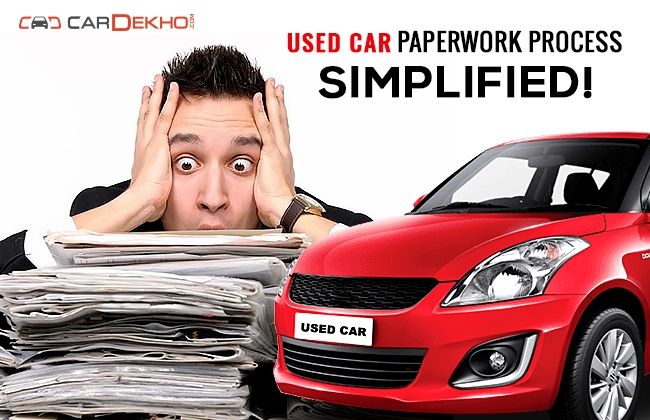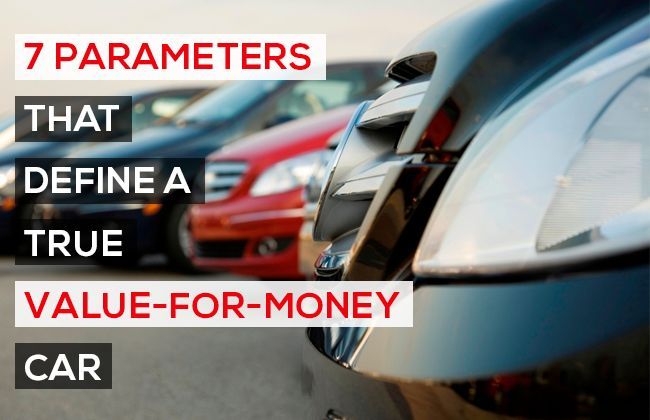All You Need to Know About Used Car Paperwork
Modified On May 13, 2016 01:14 PM By Aman
- 7.1K Views
- Write a comment
After days and even months of research which involved taking help from online auto portals, heading to various used car dealers or individual sellers and a few test drives as well, you’ve finally come across the one that suits you best! Now that you have zeroed down on the used car of your choice, one big task remains that needs to be simplified i.e. the paperwork process. By taking care of certain legal documentation and ensuring the right paperwork, you can now get the car completely to your name and drive it without any hassle.
The process may seem daunting, or the people selling you the car may make it seem so. Only so, because they can extort the most they can from you. That is why we are here to help by simplifying this process. All you need to do is follow our step by step guide. By the end of it, you will be accustomed to all the requirements so you don’t have to waste your time running to and fro when getting the paperwork done.

Step 1 – Document Check: It doesn’t matter if you are buying the car from an individual, local car dealer or through an OEM dealership, it is imperative to get these documents checked carefully.
Registration Certificate (RC)
The RC provides important information about the car which includes owner’s name, details, car body type, manufacturing year, engine capacity and so on. Begin the process by checking this first. Check the Chassis number and Engine number and Vehicle Identification Number (VIN). Make sure all these match the number on the VIN plate of the car. This can be located on either front of the engine under the bonnet, driver side interior dashboard, driver side door or even at the front fender (in case of an old car).
A modern day car Registration Certificate (RC) looks like this

What to watch out for
- See if ‘DRC’ or ‘Duplicate’ appears anywhere. It stands for Duplicate Registration Certificate, and if it does, find out from the seller the reason behind sharing a duplicate RC instead of the original one.
- If the car went through any major accident in the past, there would have been an engine replacement which should be updated in the RC
- If the car is quite old and the engine encountered any major faults, it would have been replaced as well and the new engine details should be mentioned in the RC
- Check the state in which the car has been registered. If you are taking it to another state, ideally you have to get it registered there. Not getting it done can lead to claim issue in case the car meets with an accident
Insurance
Make sure that the insurance of the car isn’t expired and check the type of insurance, if it has a third-party or comprehensive insurance. After this, transfer the insurance to your name. Find out if the premium has been paid regularly.
What to watch out for
- If the car that you have finalized has an expired insurance or is on the verge of renewal, you can always ask the seller to get it done in the same deal or cut down the price of the vehicle
- In any of the case, it is a MUST to at least get a third party insurance done. A third party insurance does not cover you and the vehicle, but it saves you from the hassle of any accidental damage to a third party by taking legal liability of the same. For example, if a pedestrian, a fellow driver or any property suffers any injury/damage from your driving.
- Check for any past accidental claims taken by the previous owner which should be mentioned in the Insurance receipt. In case there has been none, you can also get a no-claim bonus
Service-related Documents
Always check the service history of the car and demand for past service record documents. This is to cross examine the actual running of the car, service intervals and along with that you will also get to know if only the entitled mechanics at the service station have serviced your potential purchase or not by going through the records. Checking the past properly will help you learn a great deal about the car’s present condition.
Form 32 & 35
These documents are relevant if the previous owner had taken a loan to purchase the car. Ask the seller for a copy of the no-objection certificate (NOC) from the finance company. This is to ensure that the entire loan on the car has been paid off. If you fail to do so and there is still some amount pending to be paid by the last owner, after getting the ownership transferred in your name, the bank will end up asking you to pay the pending loan.
Road Tax Receipt
This is a one-time payment that has to be paid by the previous owner of the car. If this tax isn’t paid, you will have to bear the burden of the penalty. So ensure that you obtain a receipt for the tax paid.
Purchase Invoice/Sales receipt
This is simply the bill that you receive when you purchase the car just like any other ordinary purchase and you are handed over a bill/invoice. If you are buying it from an individual, ensure that you ask for a sale receipt. While buying it from a dealership or the company, you should get a printed invoice.
Step 2 – Miscellaneous checks: These things might take a bit of legwork, and you very well know how much time the legal processes take in our part of the land. So even before you are asked to get the smallest of documents and photocopies, let us prepare you beforehand by just brushing through the steps below.
1. Obtain CC/NOC from the original RTO, where the vehicle is registered
If it is an in-state, same-city transfer CC (Clearance Certificate) is needed. If it is an out-of-state transfer/other region transfer, a NOC (No-Objection Certificate) is needed. If the vehicle you are purchasing is under loan, it will not be issued a CC/NOC unless the loan is cleared.
If the car you are purchasing is not under loan, documents required for the CC/NOC include:
- Form 29, (Form 28 also required in case of vehicle from other region/state) – 3 copies.
- Proof of payment of Motor Vehicle Tax (up to date)
- NOC from prosecution branch of registering authority
- NOC from police commissioner/SP (for vehicles migrating out of state)
- All valid documents of the vehicle (original and photocopies.)
If the car you are purchasing is under loan, you will have to apply for removal of hypothecation before proceeding. The loan should be completely repaid for this to happen.
- Ask the owner to obtain NOC from the bank’s side after the loan is repaid.
- Go to the RTO where the car is registered with the NOC and all supporting vehicle documents.
- You can apply for hypothecation and submit the documents. The hypothecation will then be removed.
- Once this is done, follow the regular procedure mentioned for car not under loan, to obtain CC/NOC from RTO’s side.
2. Apply for transfer of ownership in your home RTO
For this, the documents required are:
- Form 29, (Form 28 in case vehicle is from another region) – 2 copies
- Form 30 – 1 copy
- Original RC book (with RTO NOC stamp)
- DD (Demand Draft) for payment of life-tax of vehicle (you can get a refund from the original RTO later)
- PUC Certificate
- Address and Identity proof
- Car insurance copy
- All valid vehicle documents and personal documents. (originals and photocopies)
- 3 passport size photographs.
Do visit this link for further information. For information pertaining to your region, do visit the state road transport department website.
That is all there is to it. Once you go through all the checks above, you are hardly going to face any difficulties in the process of documentation for your used car. The only important step remaining now is- make the payment, ask for the keys, get inside your purchased vehicle and drive it to your favorite destination or first get the holy rituals done whichever suits you first!
20 out of 20 found this helpful












